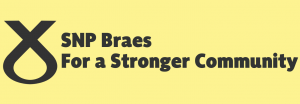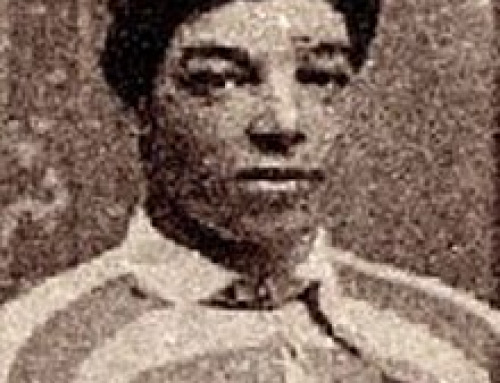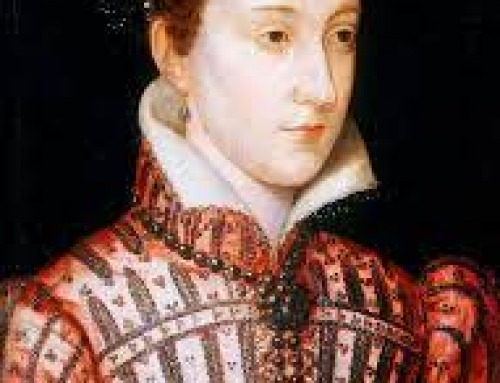The Anglo-Norman family of Bruce, which had come to live in Scotland inthe early 12th century, was related by marriage to the Scottish royal family,so the sixth Robert de Bruce (died 1295), grandfather of the future king, he was one of a number of people who laid claim to the throne of Scotland when it was left vacant in 1290. The then English king Edward I claimed feudal superiority over the Scots and awarded the crown to John de Balliol instead Like many conflicts of the medieval era, the First War of Scottish Independence began with this succession crisis. After Alexander III, King of Scots, died suddenly in 1286, the throne passed to his granddaughter, three-year-old Margaret, Maid of Norway. Never officially crowned, she died unexpectedly four years later, triggering a battle for power between claimants John Balliol and Robert the Bruce, the grandfather of the better-known Robert. Trapped in a stalemate, the Scots asked England’s Edward I to choose their nation’s next ruler. In 1292, he picked Balliol… England’s intervention came with a heavy price: Edward forced the Scottish nobility to pledge fealty to him, eroding the country’s claim to sovereignty and treating Scotland much like his own feudal territory. Then incensed, the Scots formed a separate alliance with France in 1295 and continued their subversion of English authority with a 1296 attack on the city of Carlisle. Edward retaliated in typical brutal fashion. As 15th-century chronicler Walter Bower recounts, the king targeted the Scottish city of Berwick, sparing no one, whatever the age or sex, and for two days streams of blood flowed from the bodies of the slain so that mills could be turned round by the flow of their blood. During these early stages of the war, Bruce and his father Robert sided with the English. The younger Robert had recently served in the royal household, Michael Penman writes in Robert the Bruce: King of the Scots, and it’s possible he wanted to convince Edward that the Bruce clan had forgotten its ambitions of claiming the throne. Whatever his motivations, the 21-year-old Robert marched with the English against the country he would one day rule. Bruce’s father, the seventh Robert de Bruce (died 1304), resigned the title of Earl of Carrick in his favour in 1292, but little else is known of his career until 1306. In the confused period of rebellions against English rule from 1295 to 1304 he appears at one time among the leading supporters of William Wallace, but later apparently regained Edward I’s confidence. There is nothing at this period to suggest that he was soon to become the Scottish leader in a war of independence, Braveheart famously depicts Bruce betraying Wallace during the Battle of Falkirk in 1298, then having a change of heart and rescuing the downed Scots leader from the wrath of the English. Yet there’s no historical evidence Bruce was at Falkirk, nor that he directly betrayed Wallace (although he did switch sides several times in these early years), the story is mainly cited to reflect how Wallace’s failure to win at Falkirk inspired Bruce’s later success. After Wallace was defeated, strangely none of the Bruce’s lands were confiscated and in fact in 1298, Bruce became one of the joint guardians of Scotland, together with John Comyn, Balliol’s nephew and Bruce’s greatest rival for the Scottish throne However that all changed when Bruce agreed to meet with long-time opponent John “the Red” Comyn at a priory in Dumfries in southern Scotland, ostensibly to discuss certain business between them both,” but quickly changed tactics, accused Comyn of treachery and struck him down. As Comyn lay bleeding at the foot of the shrine, Bruce retreated, giving the friars a chance to tend to the fallen man’s wounds But he then learned his target was still alive and sent several men back to finish the Bloody task. As Walter of Guisborough wrote around 1308, when Comyn had confessed and was truly repentant, by the tyrant’s order he was dragged out of the Vestry and killed on the steps of the high altar. “The murder described by the English the following year as “outrageous sacrilege inhumanly committed against God and the holy Church.

This then placed Bruce on a collision course with Scotland’s imposing neighbour, England. But the motivations behind the act remain as mired in uncertainty as the legacy of the warrior king himself. Alternately painted as a patriot whose perseverance secured his nation’s independence or a more shadowy figure with dangerous ambitions and a tenuous sense of allegiance, Bruce remains one of Scottish history’s most controversial characters, and one of the few whose name is easily recognized by non-Scots. Comyn, a nephew of John de Balliol, was a possible rival for the crown, and Bruce’s actions suggest that he had already decided to seize the throne. He hastened to Scone and was crowned on March 25th 1306 he was invested with the Scottish kingship in a surprisingly elaborate ceremony held at Scone Abbey. Despite lacking the traditional coronation stone, diadem and sceptre, all of which had transferred to England in 1296, Robert officially became King of Scots However the new king’s position was very difficult. Edward I, whose garrisons held many of the important castles in Scotland, regarded him as a traitor and made every effort to crush a movement that he treated as a rebellion. King Robert was twice defeated in 1306, near Perth on June 19, and Dalry, near Tyndrum, Perthshire, on August 11.

His wife and many of his supporters were captured, and three of his brothers executed. Robert himself became a fugitive, hiding on the remote island of Rathlin off the north Irish coast. It was during this period, with his fortunes at low ebb that he is supposed to have derived hope and patience from watching a spider perseveringly weaving its web. In February 1307 he returned to Ayrshire. His main supporter at first was his only surviving brother, Edward, but in the next few years he attracted a number of others. Bruce’s forces secured a minor victory at the Battle of Glen Trool it was really more of a skirmish in April 1307. The following month, the Scots faced off with de Valence once again, this time at Loudoun Hill. Prior to the battle, Bruce surveyed the area and concocted a plan to restrict the movements of de Valence’s horsemen, who would otherwise overwhelm the Scottish spearmen fighting on foot. As Fiona Watson writes in Robert the Bruce, the newly confident commander ordered three trenches dug at right angles to the road, ensuring that only a limited number of cavalry would be able to reach the Scots ensconced within. The English outnumbered Bruce’s men by 3,000 to 600, but were wary to ride directly into the Scottish warriors’ spears. Those who did found themselves dashed upon the ground, and as the battle drew to a close, the spearmen triumphed. he also defeated John Comyn, earl of Buchan (a cousin of the slain John “the Red”), and in 1313 captured Perth, which had been in the hands of an English garrison. Much of the fighting, however, was done by Robert’s supporters, notably James Douglas and Thomas Randolph, later earl of Moray, who progressively conquered Galloway, Douglasdale, the forest of Selkirk and most of the eastern borders, and finally, in 1314, Edinburgh. During these years the king was helped by the support of some of the leading Scottish churchmen and also by the death of Edward I in 1307 and the ineptness of his successor, Edward II.

The test came in 1314 when a large English army attempted to relieve the garrison of Stirling but was soundly defeated at Bannockburn on June 24 On the first day of the Battle of Bannockburn, an English cavalry spotted and charged towards a Scottish group. The Scottish king was present there and an English knight, Sir Henry de Bohun charged across the field on his war-horse to strike him. Robert Bruce stood his ground, dodged the lance and struck Bohun with his axe to split his head in two.

This incident charged Bruce’s army for the battle and is one of the most celebrated single contests in Scottish history. Almost the whole of the rest of his reign had passed before he forced the English government to recognize his position. Berwick was captured in 1318, and there were repeated raids into the north of England, which inflicted great damage. Eventually, after the deposition of Edward II (1327), Edward III’s regency government decided it was better to make peace by the Treaty of Northampton (1328) on terms that included the recognition of Bruce’s title as king of Scots and the abandonment of all English claims to over lordship. In 1316 His brother Edward Bruce was inaugurated as high king of Ireland but was killed in battle in 1318. Robert’s main energies in the years after 1314, however, were devoted to settling the affairs of his kingdom. Until the birth of the future king David II in 1324 he had no male heir, and two statutes, in 1315 and 1318, were concerned with the succession. In addition, a parliament in 1314 decreed that all who remained in the allegiance of the English should forfeit their lands; this decree provided the means to reward supporters, and there are many charters regranting the lands so forfeited. Sometimes these grants proved dangerous, for the king’s chief supporters became enormously powerful. James Douglas, knighted at Bannockburn, acquired important lands in the counties of Selkirk and Roxburgh that became the nucleus of the later power of the Douglas family on the borders. Robert I also had to restart the processes of royal government, for administration had been more or less in abeyance since 1296. By the end of the reign the system of exchequer audits was again functioning. In the last years of his life, Bruce suffered from ill health and spent most of this time at Cardross, Dumbartonshire, where he died, possibly of leprosy. His body was buried in Dunfermline Abbey, but the heart was removed on his instructions and taken by Sir James Douglas on crusade to the Holy Land. Unfortunately, the ever-restless Douglas stopped to support Spain’s Alfonso XI in his campaign against the Moors and was killed in battle. According to legend, he threw the casket holding Bruce’s heart ahead of him before entering the fray, declaring, “Lead on brave heart, I’ll follow thee.” Douglas was killed, but it appears that the heart was recovered and brought back for burial, as the king had intended, at Melrose Abbey. In 1921 a cone-shaped casket containing a heart was uncovered during excavations at the abbey, reburied at that time, and re excavated in 1996. (Heart burial was relatively common among royalty and the aristocracy, however, and there is no specific evidence that this casket is the king’s.)

In later times Bruce came to be revered as one of the heroes of Scottish national sentiment and legend. The image of Bruce as model king and consummate defender of Scotland endures to this day, but the man behind the myth is harder to pinpoint: Whereas predecessor William Wallace was “an arch patriot,” Bruce is a figure whose early years were marked by murder at the high altar, shifting loyalties and a string of military failures. It’s also worth noting that the peaceful independence Bruce fought for lasted just a few years, with hostilities starting up again in 1332 and continuing sporadically until the 1707 Act of Union brought England and Scotland together under the single entity of Great Britain.
Fact or Fiction
His mother was a formidable woman and it is said she held his father captive and refused to release him till he agreed to marry her. His grandfather, also named Robert Bruce, was a claimant of the Scottish crown. Hence from his mother Bruce inherited the Earldom of Carrick, and through his father a royal lineage that would give him a claim to the Scottish throne.
In early 1296, Robert the Bruce married his beloved Isabella of Mar, who was the daughter of the Earl of Mar. However Isabella died the same year after giving birth to their daughter Marjorie Bruce. Six years later Bruce married his second wife Elizabeth de Burgh, daughter of a powerful Irish noble. They had three children who reached adulthood. One of them was the future king of Scotland David II.
He likely spoke Scots, Gaelic, Latin, and Norman French, and was an avid reader who loved reading about the lives and times of previous monarchs. According to a parliamentary brief from around 1364, Robert the Bruce “used continually to read, or have read in his presence, the histories of ancient kings and princes, and how they conducted themselves in their times, both in wartime and in peacetime.” In his free time, he would recite tales about Charlemagne and Hannibal from memory.
Legend has it that as Robert took shelter in the cave in the winter of 1306 on Rathlin Island in Northern Ireland where he saw a spider trying and failin to spin a web. The creature kept attempting to swing toward a nearby rock and refused to give up. Bruce was so inspired by that spider’s tenacity that he vowed to return to Scotland and fight. Within three years, he was holding his first session of parliament.
Robert the Bruce’s physician, Maino de Maineri, criticized the king’s penchant for devouring eels. “I am certain that this fish should not be eaten because I have seen it during the time I was with the king of the Scots, Robert Bruce, who risked many dangers by eating eels, which are by nature like lampreys,” de Maineri wrote. “It is true that these eels were caught in muddy and corrupt waters.” ( Strangely, overeating eels was considered the cause of King Henry I of England’s death.)
After the death of his second wife, Elizabeth de Burgh, Robert the Bruce decreed to give the Auld Kirk in Cullen, Scotland now the Cullen and Deskford Parish a total of five Scots pounds every year. That’s because, in 1327, Elizabeth who had died after falling off a horse, and the local congregation generously took care of her remains. Robert was so touched by the gesture that he promised to donate money “for all eternity.” And to this day, his bequest is still being paid
Robert the Bruce died on June 7, 1329, just a month before his 55th birthday. The cause of his death has always been a source of much discussion, and disagreement, but most modern scholars believe that he succumbed to leprosy. His funeral was a rather elaborate affair that required nearly 7000 pounds of candle wax just for the funerary candles. Following the fashion for royalty, he was buried in multiple places. His chest was sawed open and his heart and internal organs removed: The guts were buried at the Manor of Cardross, near Dumbarton; his corpse interred in Dunfermline Abbey; and his heart placed inside a metal urn to be worn around the neck of Sir James Douglas, who promised to take it to the Holy Land.
Although they were alive at the same time, and William Wallace was Guardian of Scotland immediately before Robert the Bruce, there is no evidence that the two ever met.
Bruce’s victory at Bannockburn in 1314 enabled him to demand the return from English captivity of his wife Elizabeth, his daughter Marjorie, his sister Christina, and Robert Wishart, bishop of Glasgow
Robert the Bruce was Earl of Carrick from 1292 to 1313. This title is now held by Charles, the Prince of Wales.
As well as the earldom of Carrick and the lordship of Annandale, Bruce held land both in the Carse of Gowrie, Dundee, and the Garioch Aberdeenshire. Before the Wars it was fairly common for Scots to hold English lands. Records show that Bruce held lands in Durham and other large English estates. In 1306, Edward I confiscated the honour of Huntingdon from Bruce. During Robert’s reign, parliament became more representative of the full community of the realm. Bruce summoned a small number of burgesses from each royal burgh to attend sessions in 1312 and 1326, after which it became normal practice




